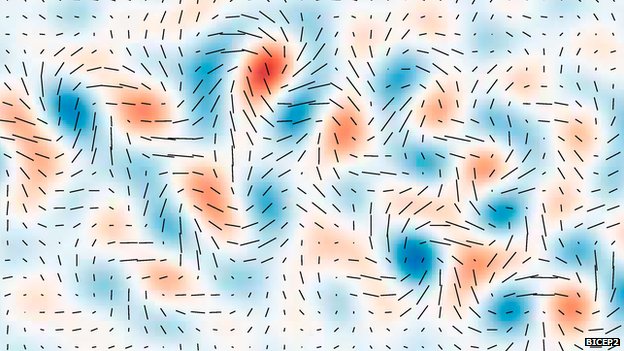A Kid-Friendly Explanation of The Big Bang & An Amazing New Discovery by Scientists
Most scientists believe that the Universe began in a Big Bang around 14 billion years ago. The entire Universe was inside a bubble thousands of times smaller than a pinhead, and was hotter and denser than anything we can imagine.
When the explosion called the Big Bang happened, the Universe as we know it was born. In a fraction of a second, the Universe grew from smaller than a single atom to larger than a galaxy. It kept on growing, and is still expanding today.
Now researchers in America think they have found traces left in the sky that prove this that the Big Bang did really happen. It takes the form of a distinctive twist in the oldest light detectable with telescopes. These twists of light are called ‘gravitational waves’ – the effect is a little bit like how waves form on the surface when you drop a big stone in a pond. However, you also have to imagine that the Big Bang formed the pond itself.
The team leading the project, known as BICEP2, has been using a telescope at the South Pole to make detailed observations of a small patch of sky. The aim was to find evidence of ‘inflation’ – the idea that the cosmos grew rapidly in its first trillionth, or trillionth of a trillionth of a second – growing from something unimaginably small to something about the size of a marble.
The leader of the team, Prof John Kovac of the Harvard-Smithsonian Center for Astrophysics said:
“This is opening a window on what we believe to be a new regime of physics – the physics of what happened in the first unbelievably tiny fraction of a second in the Universe.”
Over the coming years, scientists will work hard to investigate every aspect of this discovery. Other experiments will be carried out to see if they can replicate the findings of the American team. If this research is confirmed, it will be one of the greatest scientific discoveries of our time.
EDIT
Dr Sarah Bearchell drew our attention to this video, which explains the concept of gravity and gravitational waves with the help of a towel, an apple and a ping pong ball. Check it out
How Do We Know How Old an Artifact Is? A Kid-Friendly Introduction of Carbon Dating
What can we tell from the study of BONES? According to Tina, we can tell an awful lot about a person by studying their bones – even centuries after they died. This process is called CARBON DATING.
Jump! Into SCIENCE – Dry Ice Bubble Experiment
Do you like blowing bubbles? Well, how would you feel if you could blow foggy bubbles that bounce? Pretty awesome, huh? Check out this fun dry ice bubble experiment.
Green and Growing: The Life of a Seed
As you know, there is a vast number of different kinds of plants growing all over the world, from snowy slopes to Amazon rain forests to dusty deserts: plant life is everywhere. So how does it all work? Lets start with seeds.
The Life of a Seed
Picture a seed – I am sure you have all seen them. It will have a hard outer shell to protect it. When it has found the right conditions of warmth and moisture, this shell will crack or split as a root pushes its way out to take hold in the soil. Then the plant will start to grow and a shoot will make its way upwards, with the root growing down, to draw moisture from the ground and provide some balance for the plant, keeping it firm in its place.
Just like you and me, plants need food to grow. Their food is very different from ours, of course! Here’s what they do: the leaves draw water up from the roots, through the stem, and they also soak up sunlight and air. These three things combine to make food in the leaves, where it is stored. Now think of an onion. It is formed to store the food for the plant.




